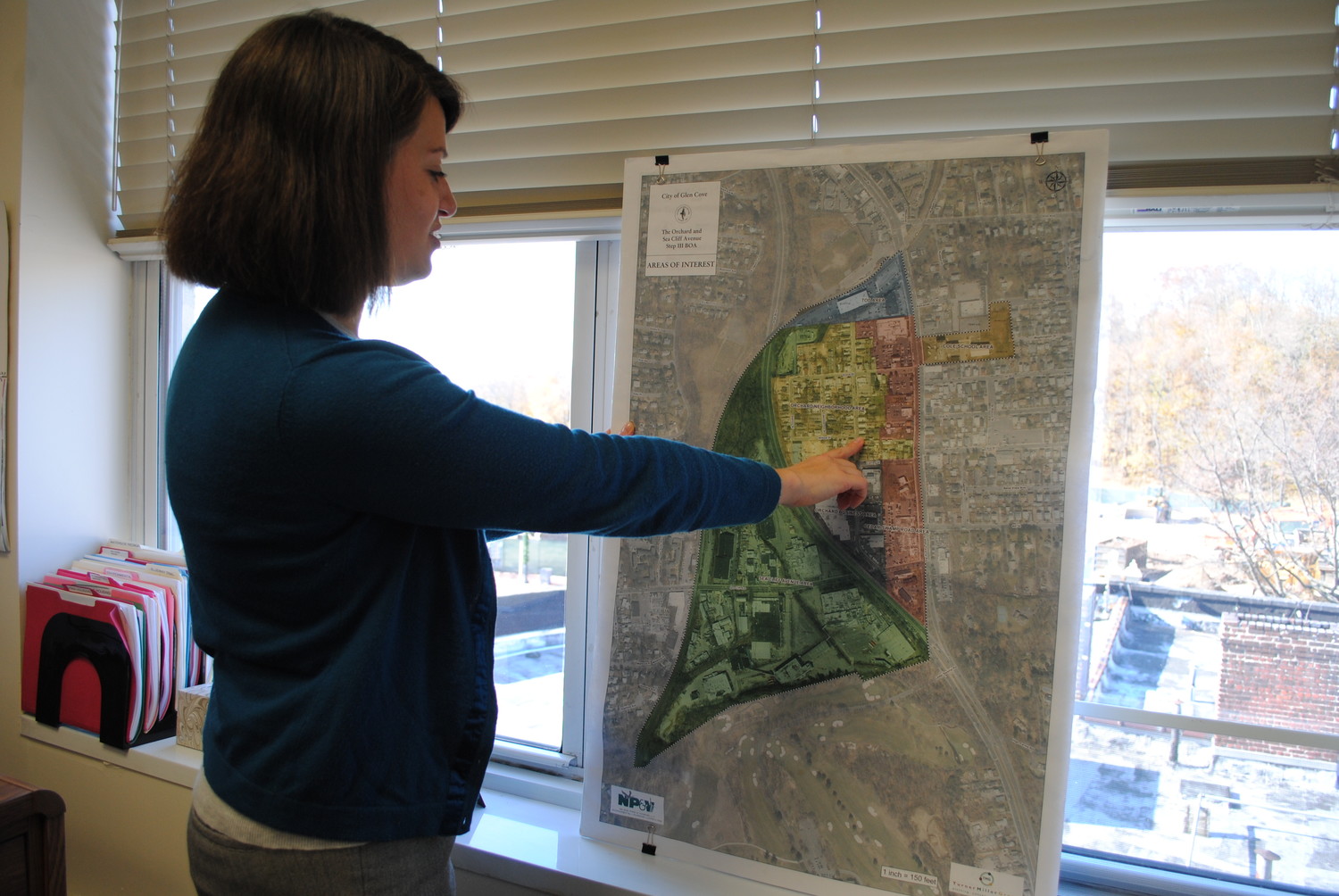Study looks into neighborhood revitalization
State grant and city fund studies
As part of Glen Cove’s revitalization efforts, the city is using a Brownfield Opportunity Area program grant to evaluate potential redevelopment in an area that encompasses the neighborhoods along Pratt Boulevard, Sea Cliff Avenue, Cedar Swamp Road and the Glen Street Long Island Rail Road station.
The BOA grant of $402,100, funded by the New York Department of State, provides financial and technical assistance for the reuse of areas that have been designated former brownfields — areas where hazardous contamination was a concern. The city will kick in $44,678 toward the studies.
According to Community Development Agency Executive Director Ann Fangmann, city officials hope to have a draft implementation plan finished by next spring. They are now focusing on sites including the Orchard Neighborhood, the Glen Street train station, the Photocircuits property, the Coles School and the Glen Cove Day Care Center.
Sea Cliff Avenue
Groundwater contamination is also being addressed at both sites. Ringewald said that remedies are currently in the design phase, and are also expected to be completed by spring.
She also said that the DEC has an agreement with Hampshire Corporation, which is proposing the redevelopment of the Pall site, to coordinate the remedial construction with the redevelopment of the site as a self-storage facility.
“These sites are being cleaned up under the state Superfund program,” Ringewald said. The goal is to “return these properties to active use that is protective of public health and the environment, and commensurate with current and anticipated zoning.”
Accessibility issues at the Glen Cove Day Care Center are being studied, with the potential to relocate the facility or create new, safer pedestrian and vehicular access from Orchard and/or Sea Cliff Avenue, Fangmann said.
Coles School
Mayor Reggie Spinello has expressed a desire to move a city agency, such as the Youth Bureau, to the area behind the Coles School. “What’s most far along is the negotiations with the prospective purchaser of the actual school for the reuse as a private school,” Fangmann said. “People want to see the building reused. People also want to see more community amenities for this area and this site.”
The grant also helped fund the appraisal of the school, an environmental assessment, the evaluation of a potential abatement, as well as site design and redevelopment cost estimates.
Orchard Neighborhood
The Orchard Neighborhood was not deemed a brownfield, but Fangmann said that city officials are studying pedestrian circulation and parking issues. The city, which owns a 14-space parking lot on Capobianco Street that requires residential permits, is looking into different scenarios for reuse of the property, including a larger parking lot or a park. Combining properties into an affordable housing project, if landowners become interested in selling, is another possibility.
“We’re definitely not looking to replace any low- to moderate-income housing that’s already in the Orchard Neighborhood area,” Fangmann said. “We’re only looking to potentially add more attainable housing to the city’s housing stock” — possibly a dozen or so units aimed at those in the 60 to 80 percent area median income range, or $60,000 to $80,000 per year.
A “green” infrastructure study, to identify areas where the city can implement rain gardens, bioswales and native plantings, is also under consideration.
Glen Street train station
The area surrounding the Glen Street station includes a commercial building that is for sale and a large parking lot, which Fangmann said is not usually full. “If someone was to redevelop this site, we want to require them to have an access point between [the train station] and the rest of the Orchard Neighborhood area,” she explained. “We would ask them to include a pedestrian ramp or even a multi-use ramp that could include bicycles to connect this property with the rest of the neighborhood.”
If a developer were to make the site residential, Fangmann said, 80 units or so might be feasible, and officials are studying whether the market could support a requirement to build more lower-income units than the current 10 percent required by city code.
Zoning
Fangmann said the city is also evaluating zoning overall. The Orchard Neighborhood, for example, is an Incentive Overlay District, which allows developers such things as density bonuses if they use “green” building methods and include streetscape improvements.
“Before we were just in a planning phase,” Fangmann said. “Now we’re putting some more concrete numbers to things.” The work began a decade ago, she said, because the sites have changed over the years due to turnover in ownership or changes in environmental status that have prepared some for redevelopment.
“We want to use the grant fund effectively and in a way to actually support the projects,” said Fangmann. “We don’t want to do analysis for analysis’ sake.”






